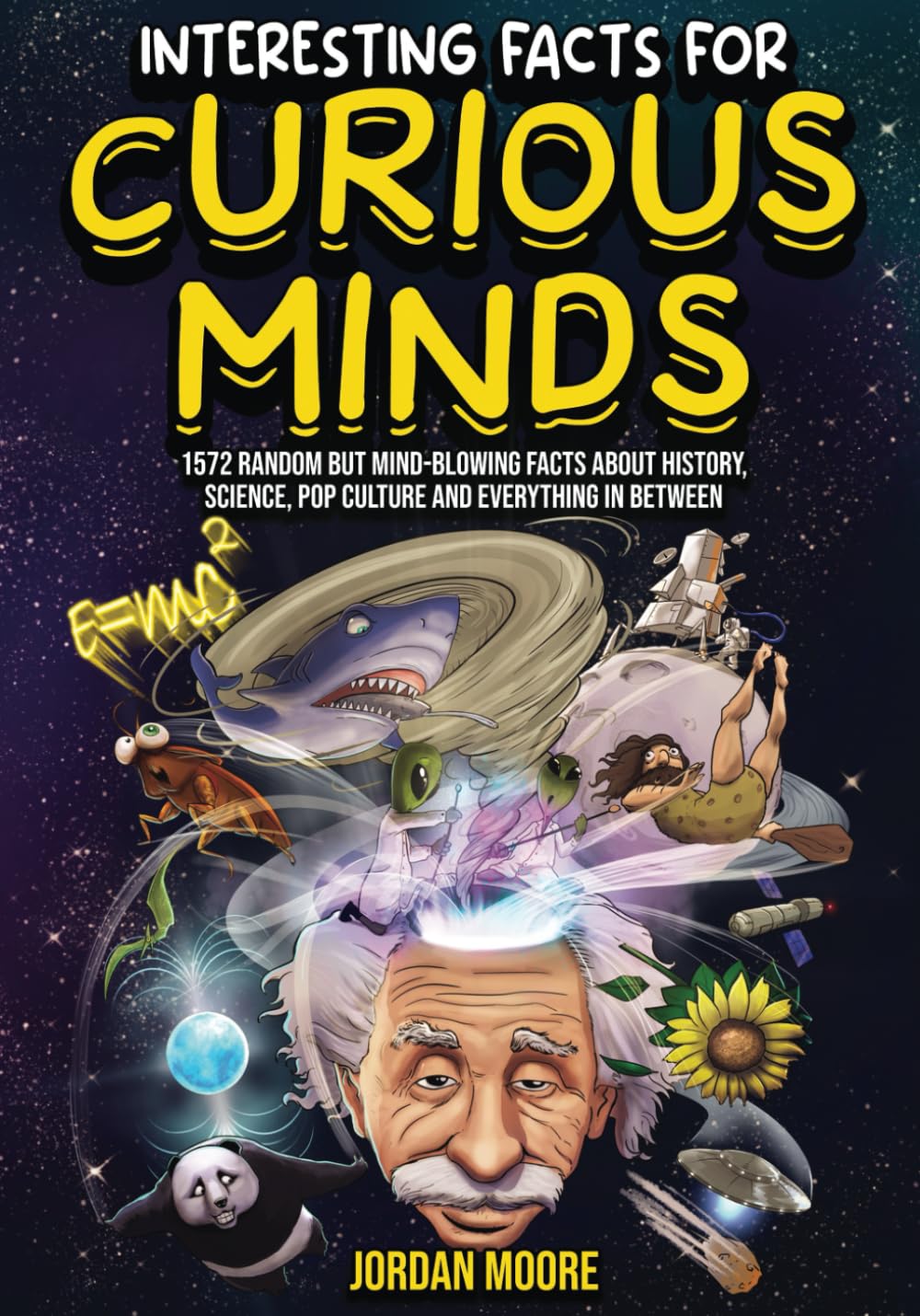
Interesting Facts For Curious Minds: 1572 Random But Mind-Blowing Facts About History, Science, Pop Culture And Everything In Between
Space And Beyond
bySpace and beyond have always been a source of fascination and mystery for humanity. Earth is situated within the Milky Way galaxy, a vast collection of stars that spans an incredible 100,000 to 200,000 light-years in diameter. Despite the immense size of the Milky Way, it is just one of potentially billions of galaxies in the observable universe, each containing countless stars, planets, and other celestial bodies. The more we learn about space, the more we uncover about our own origins and our place in the cosmos. The study of stars and their systems, such as Alpha Centauri, which is only four light-years from Earth, helps us understand the possibility of life beyond our planet. With two stars and a planet that could sustain life, Alpha Centauri is one of the most intriguing nearby systems.
Space exploration, a journey that has captivated the world for centuries, began in earnest with the help of captured German rocket scientists after World War II. These scientists played key roles in developing both American and Soviet space programs, marking the beginning of the Space Race. While the Soviets gained an early advantage with their advancements in rocket technology, the competition spurred unprecedented progress in space travel and exploration. Throughout the 20th century, significant milestones were achieved, including the creation of NASA’s National Aero-Space Plane (NASP) program in 1986. Although it was canceled in 1993 before it ever launched, NASP’s ambition to create the world’s first suborbital space liner highlighted the growing interest in commercial space travel. The excitement surrounding space exploration continues today, with companies like Elon Musk’s SpaceX and Jeff Bezos’s Blue Origin pushing the boundaries of what is possible in the cosmos.
The universe is full of mysteries, with celestial objects such as asteroids, comets, and moons forming an intricate part of its makeup. For example, Ceres, the largest object in the asteroid belt, is also considered a “dwarf planet,” and it holds a prominent place in science fiction, such as in The Expanse. The Kuiper Belt, located beyond Neptune, is another significant feature of the solar system. It is a massive region filled with asteroids, comets, and dwarf planets, extending between 30 to 50 astronomical units from the Sun. This belt is not only vast in size, but it is also 20 times as wide and up to 200 times more massive than the asteroid belt, making it an essential area of study for astronomers. Understanding the composition and dynamics of these regions helps scientists learn more about the formation and evolution of our solar system.
Planets within our solar system also provide valuable insights into the forces that govern space. For instance, Jupiter, although composed mainly of gas, has an astonishing mass that exceeds that of all the other planets in the solar system combined by two and a half times. This immense size makes Jupiter the largest planet, and its gravitational pull affects many aspects of the solar system. On the other hand, planets like Mercury and Venus, which are devoid of moons, offer a different set of challenges and characteristics. Due to the Sun’s gravitational force, these planets are unable to retain natural satellites, a sharp contrast to the outer planets, where Jupiter and Saturn have numerous moons. The differences in the number of moons across planets further highlight the varied conditions within our solar system, each contributing to the dynamic and ever-evolving nature of space.
Space exploration has also led to numerous technological advancements, especially in the private sector. Companies like SpaceX, founded by Elon Musk in 2002, have brought space travel closer to the realm of possibility for everyday people. SpaceX has revolutionized space exploration by focusing on affordable transportation to the International Space Station (ISS) and planning for future missions to Mars. Similarly, Richard Branson’s Virgin Galactic, founded in 2004, aims to be the first company to offer suborbital space tourism, making the dream of space travel a reality for civilians. Both of these companies are at the forefront of commercial space travel, challenging the traditional roles of government agencies in space exploration and pushing forward the technological boundaries that will define the next era of human space exploration.
The vastness of space also raises intriguing questions about the future of space colonization. As space technology advances, many speculate that humanity’s next great challenge will be establishing permanent colonies on other planets. With space agencies and private companies like SpaceX working toward this goal, the idea of humans living on Mars could soon become a reality. The potential for space colonization is not only driven by curiosity but also by the practical need for humanity to explore and utilize resources beyond Earth. As we continue to push the boundaries of space travel and exploration, the future of humanity in space seems increasingly feasible, providing exciting possibilities for the future of human civilization.
In conclusion, space and beyond represent an infinite frontier that continues to captivate the imagination and drive innovation. From ancient astronomers and early space missions to the cutting-edge work being done by companies like SpaceX and Blue Origin, the journey of exploring the cosmos is far from over. As technology advances and new discoveries are made, the possibilities for what lies beyond Earth are endless. Our understanding of space continues to grow, providing us with an ever-expanding universe to explore. The study of space not only deepens our knowledge of the universe but also opens up new opportunities for human progress and adventure.

